
Vegetable seedling identification can be tricky, especially in the early stages when everything looks like a tiny green sprout. Many young seedlings closely resemble weeds, which leads to common mix-ups in the garden.
This article walks you through how to recognize seedlings by their leaf shape, stem color, and growth pattern, starting from the cotyledon stage to when true leaves appear. You’ll also get helpful tips, visual tools, and app suggestions to tell your carrots from crabgrass with confidence.
Why is Vegetable Seedling Identification Tricky?
Vegetable seedling identification is challenging because many young plants, especially vegetables and weeds, initially appear similar. Their first leaves, called cotyledons, are often small, round, or oval and don’t show any of the plant’s mature traits. At this early stage, everything appears to be just a small green sprout.
There are also common causes of confusion:
- Seed trays aren’t labeled properly
- You forget where you planted certain crops
- Random sprouts show up from compost containing old seeds
These mix-ups make it hard to tell what’s intentional and what’s not, especially if you planted several types at once.
Key Stages of Seedling Development
1. Cotyledon (Seed Leaf) Stage
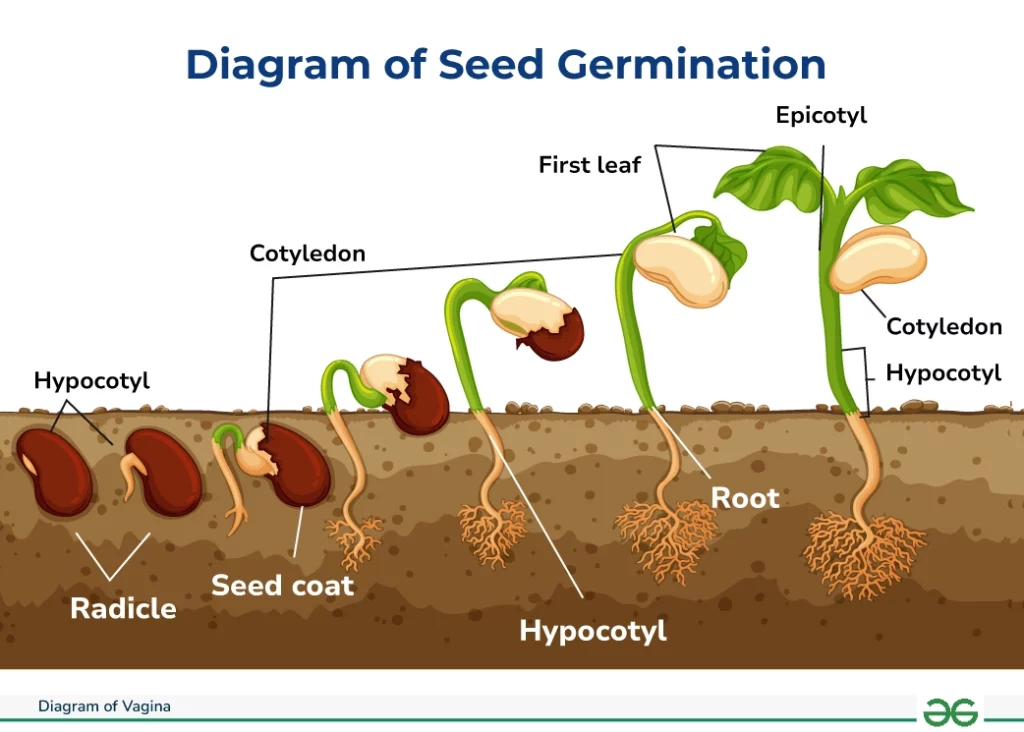
The cotyledons are the first leaves to appear after germination. They’re usually simple in shape, often round or oval, and don’t resemble the mature leaves of the plant. Their main job is to provide the seedling with a nutritional boost in its early days, not to carry out photosynthesis in the long term.
At this stage, it’s hard to tell plants apart. For example:
- Squash seedlings have broad, rounded cotyledons
- Lettuce seedlings show up with long, narrow seed leaves
Because many seedlings resemble one another here, accurate vegetable seedling identification during this phase can be challenging, especially with similar-looking weeds.
2. True Leaf Stage
After the cotyledons, the plant begins to grow its first true leaves. These usually carry distinct features, such as shape, texture, and even scent, that match what the adult plant will look like. For instance:
- Tomato seedlings start growing jagged, pointed leaves
- Kale seedlings form broader, lobed leaves
At this point, vegetable seedling identification becomes much clearer. If you’re unsure what’s growing, it’s usually best to wait for the true leaf stage before making any calls.
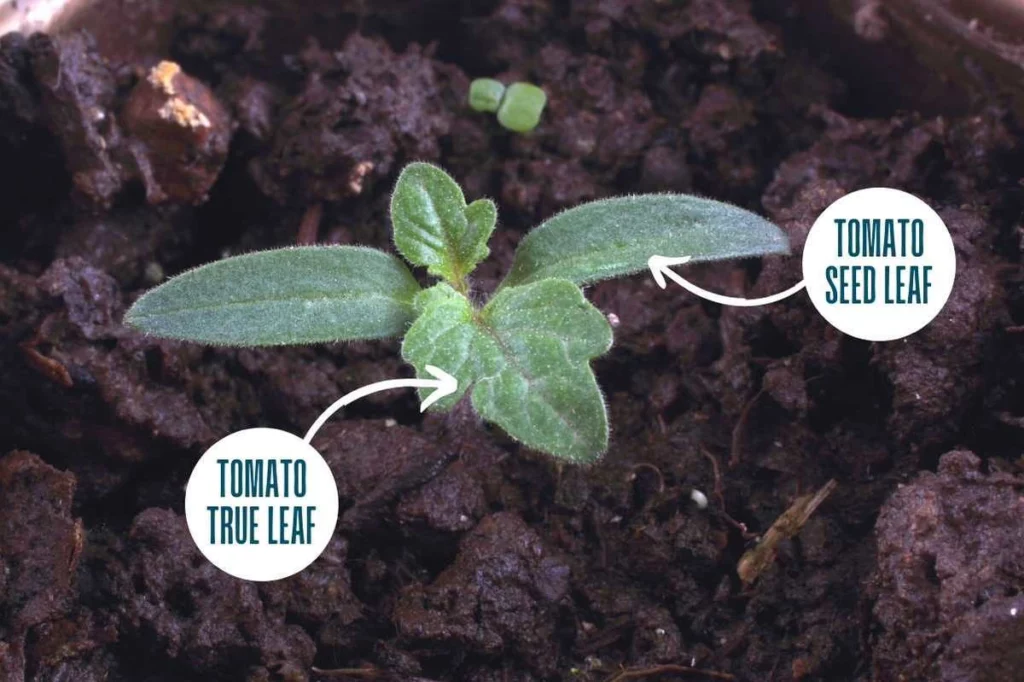
How to Visually Identify Common Vegetable Seedlings?
The best way to tackle vegetable seedling identification is by learning how different plant families typically appear in their early stages. Most vegetables within a family share the same basic seedling traits, especially at the cotyledon and first true leaf stages. Below are key family groups and what to expect when their seedlings emerge.
1. Brassica Family (Cabbage, Kale, Broccoli, Cauliflower, etc.)
Brassicas are among the most uniform at the seedling stage. Whether you’re growing broccoli, cabbage, or mustard greens, their cotyledons are nearly identical — broad, heart-shaped leaves that sit opposite each other on a short, thick stem.
- Color can vary by variety: green cabbage seedlings are completely green, while red cabbage or some kale varieties have purple-tinged stems and leaves.
- True leaves begin to show scalloped or lobed edges but remain compact and upright.
This family grows fast, and their thick stems make them easy to distinguish from fragile weeds. When in doubt, look for the classic symmetrical leaf pair and strong central stem.
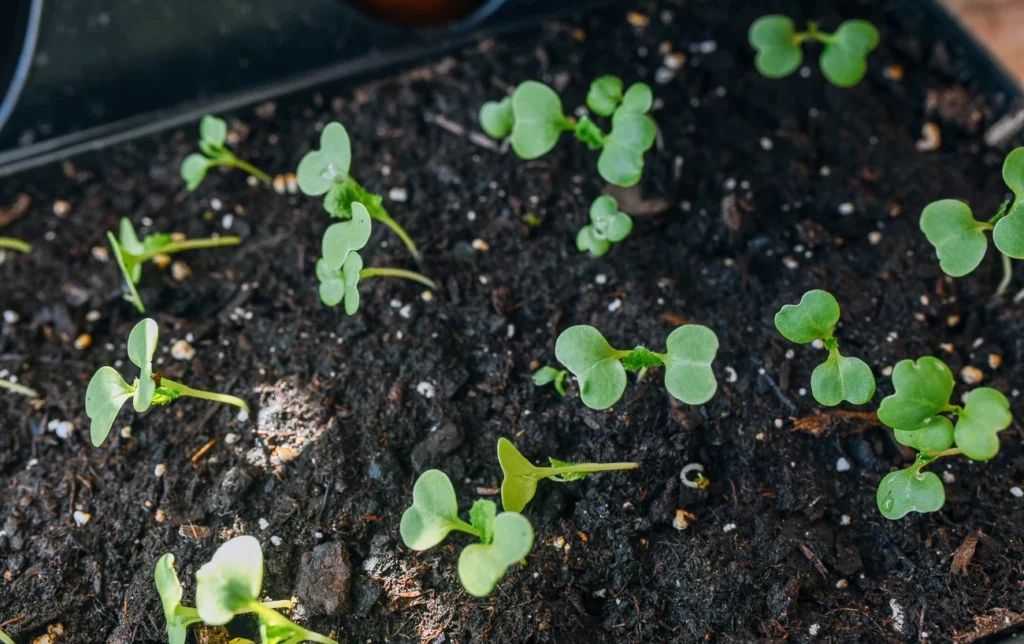
2. Nightshade Family (Tomatoes, Peppers, Eggplant, Potatoes)
Nightshade seedlings are typically started indoors, and while they may grow slowly at first, their early traits are distinctive.
- Tomatoes produce jagged, hairy true leaves with pointed tips.
- Peppers typically begin with smoother, oval-shaped leaves and may have a hint of purple on the stem.
- Eggplants resemble peppers but have slightly fuzzier leaves and may exhibit a silver sheen.
Stems in this family are often thicker and darker than other seedlings. As soon as the true leaves form, vegetable seedling identification becomes easier, especially when comparing their leaf edges to smooth-leaf imposters like certain weeds.
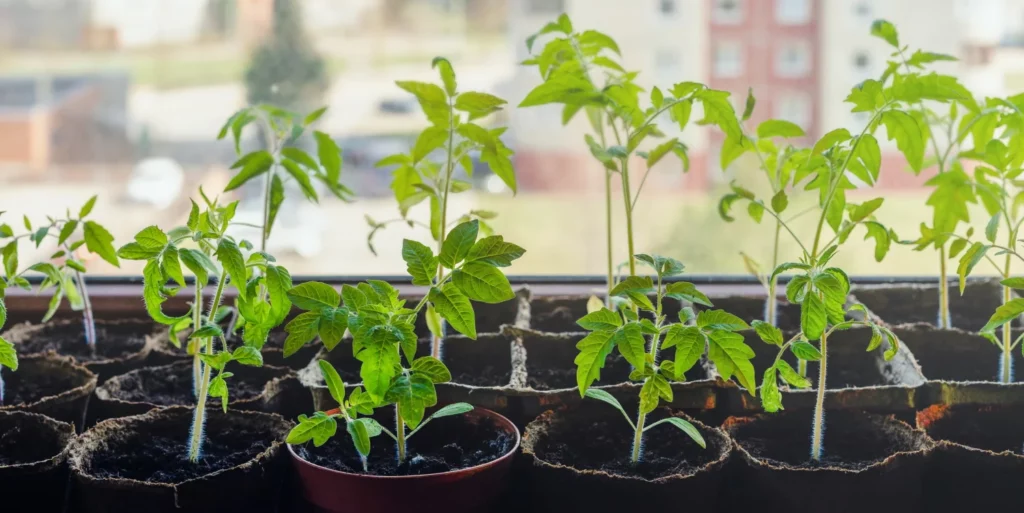
Tomatoes seedlings
3. Cucurbit Family (Squash, Cucumber, Melon, Zucchini, Pumpkin)
If you see large, bold seedlings with oval seed leaves and fuzzy stems, you’re likely looking at a cucurbit. These seedlings are hard to miss.
- Squash and zucchini seedlings are robust, often retaining their large seed husks for a few days.
- Cucumbers and melons are smaller but still have wide cotyledons and soft, hairy stems.
- Pumpkins sprout broad leaves early and may show a slight lobing pattern right from the first true leaf.
Their size alone helps set them apart from most weeds. The fuzzy texture and opposing leaf pattern make them some of the easiest seedlings to recognize.
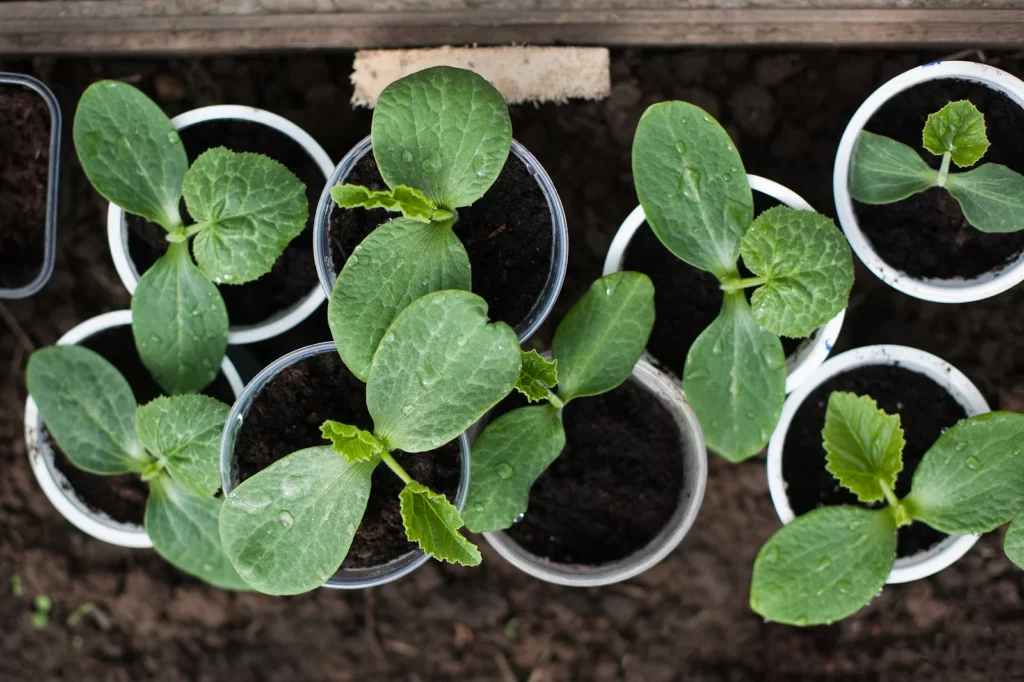
Pumpkin seedlings
4. Carrot Family (Carrots, Parsnips, Celery, Cilantro)
Carrot family seedlings tend to be delicate and slow to emerge. Their early growth can easily be mistaken for grass or certain fine-stemmed weeds.
- Carrots sprout with slender, fern-like true leaves, often while still holding onto their seed shell.
- Parsnips look similar but take much longer to germinate and may appear weeks after sowing.
- Cilantro and parsley have more rounded, serrated leaves but still emerge with a fine, lace-like texture.
Because of their feathery appearance and slow start, many gardeners mistakenly pull them thinking they’re weeds. To avoid this, plant densely and thin them later once true leaves confirm their identity.

Parsnip seedlings
5. Goosefoot Family (Beets, Chard, Spinach)
These seedlings are easy to spot once you understand their subtle differences.
- Beet seedlings often have red or magenta stems and veins, with broad, paddle-shaped cotyledons.
- Chard looks similar, though stem color can vary—red, yellow, or green depending on variety.
- Spinach stands out with narrow, lance-shaped cotyledons that seem oversized for its short stem.
At a glance, beets and chard might resemble certain weed seedlings, but the reddish tones and symmetrical growth pattern help set them apart.
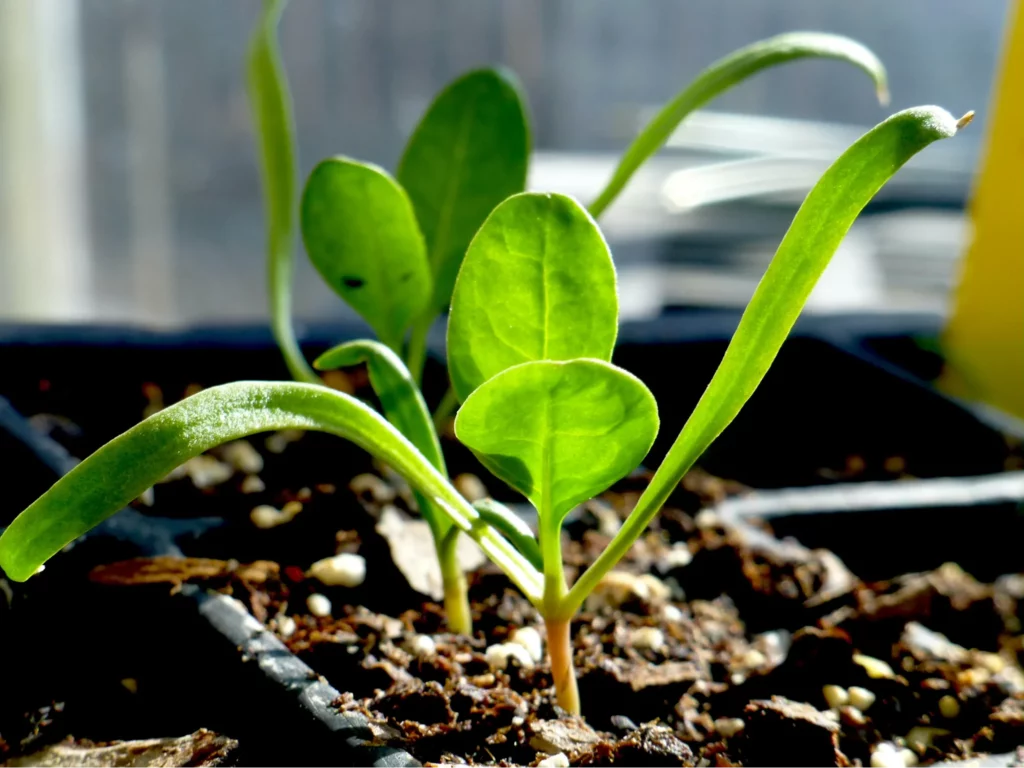
Spinach seedlings
6. Allium Family (Onions, Garlic, Leeks, Shallots)
Allium seedlings are long, thin, and grass-like, but they have a few key tells.
- Onions and shallots grow as single blades with hollow, round stems.
- Garlic and leeks have flat, wider shoots with a sage-green tone. They also tend to be stiffer and stand more upright than grassy weeds.
You might catch a faint scent of onion or garlic if you rub the stem gently, a simple yet useful trick. Because they resemble common lawn grasses, spacing and scent are your best tools for early ID.
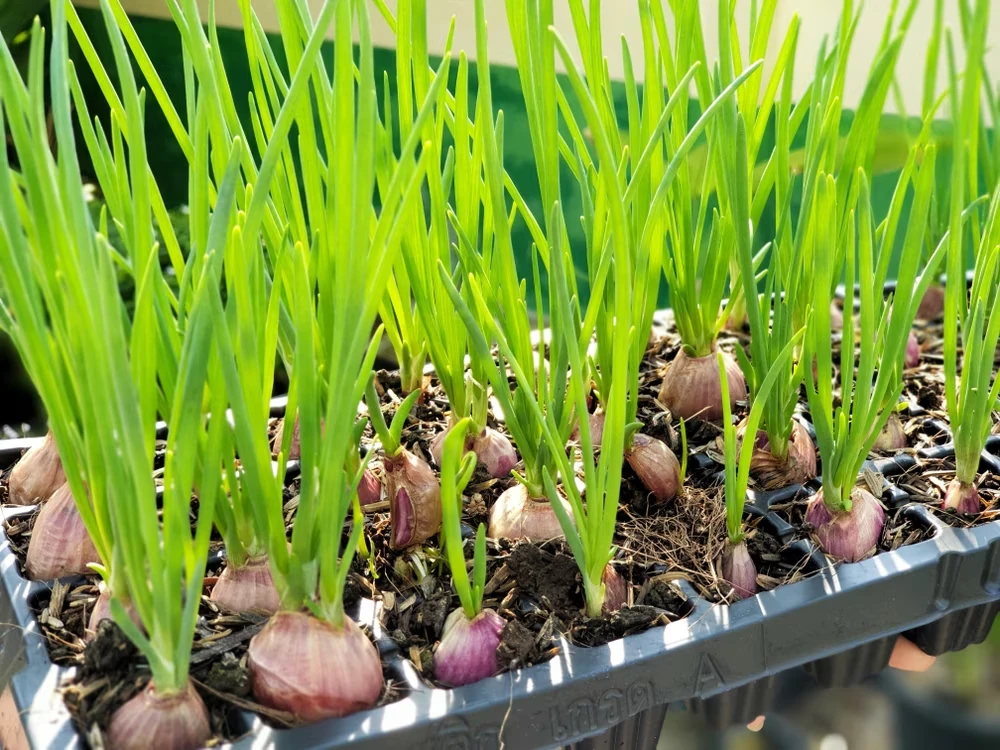
Onion and shallot seedlings
7. Legume Family (Beans and Peas)
Legume seedlings are often sturdy and grow quickly.
- Beans (bush, pole, runner) produce thick stems and rounded cotyledons that quickly give way to true leaves with three-part symmetry.
- Peas grow more delicately with slender stems and smaller, more oval seed leaves.
These seedlings usually sprout quickly and vigorously, and their upright habit, especially in beans, makes them easy to identify.
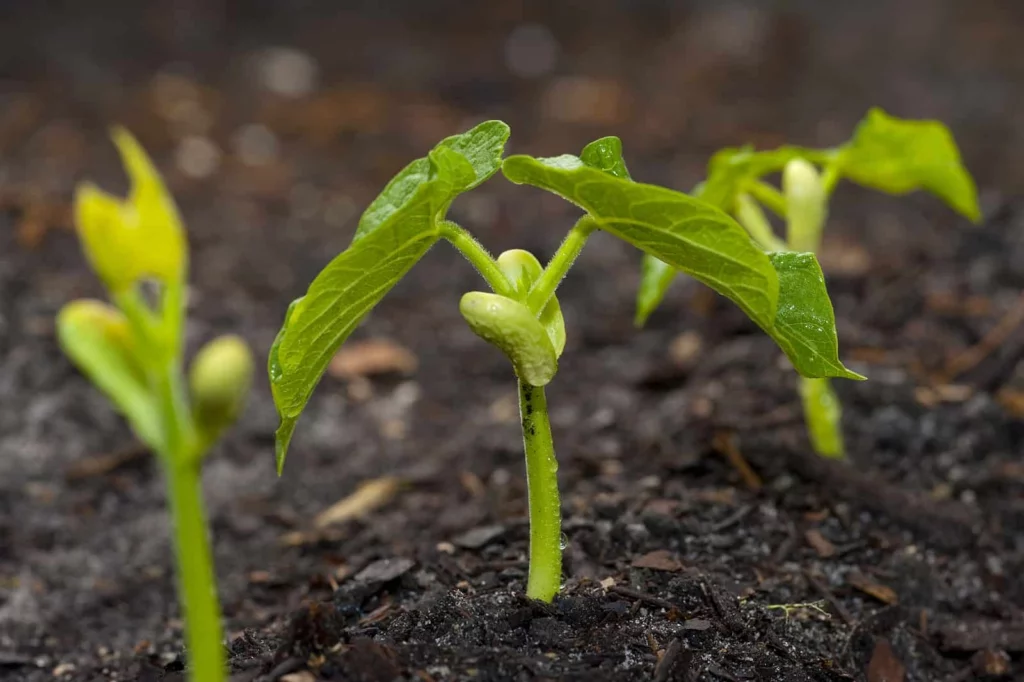
Beans seedlings
8. Aster Family (Lettuce)
Lettuce seedlings are soft and tender, with small cotyledons and smooth-edged true leaves. Their color and shape vary slightly depending on the variety.
- Green leaf lettuce starts pale and spreads outward in a loose rosette.
- Red lettuces may show purplish hues early.
- Romaine types grow taller sooner, with more upright, ridged leaves.
Because their leaves are soft and less structured, lettuce can be mistaken for certain broadleaf weeds at an early stage of growth. But planting in tidy rows helps confirm their identity over time.
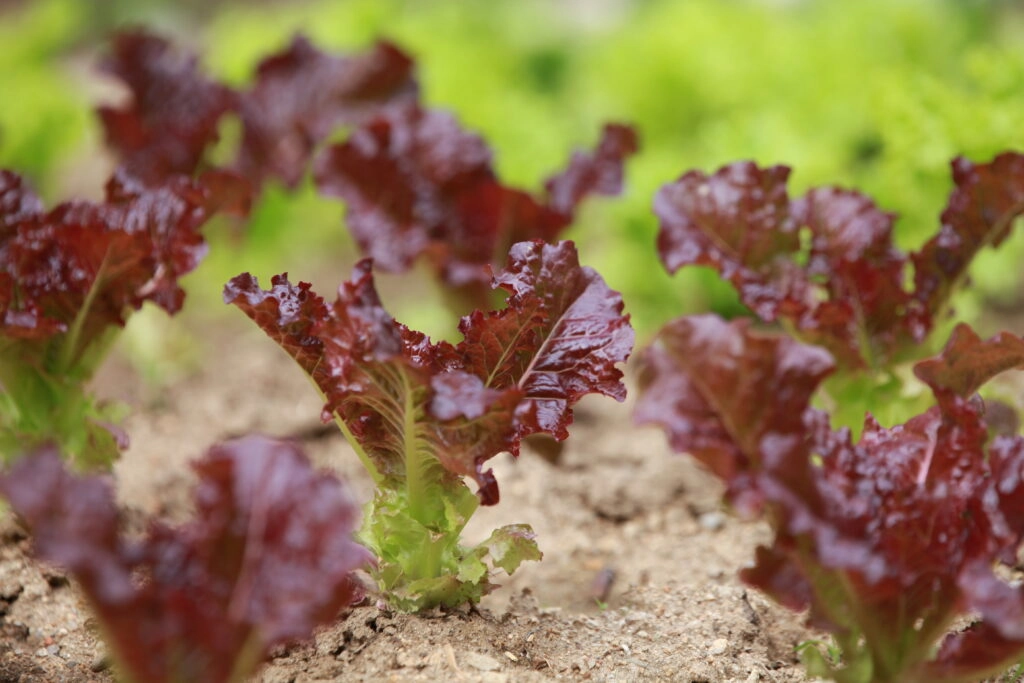
Read leaf lettuce seedlings
Tools for Vegetable Seedling Identification
To help you identify vegetable seedlings easily, below are reliable sources:
- Visual Aids: Charts, photo galleries, and side-by-side comparisons help you match seedlings by leaf shape and stem color.
- Mobile Apps: Some plant ID apps, such as Planteyes, can recognize seedlings precisely, especially when photographed clearly.
- Books and Field Guides: Seed-starting books with cotyledon illustrations give reliable visual references for early growth stages.
- Seed Packet Labels or Planting Maps: Proper labeling helps prevent confusion when seedlings from different crops look similar.
- Online Communities: Gardening forums and Facebook groups let you post photos and get quick help from experienced growers.
Practical Tips to Prevent Misidentification
1. Label everything: Mark trays, rows, and pots right after sowing to avoid second-guessing later.
2. Plant in straight lines or grids: This makes it easier to spot intruding weeds or track similar-looking seedlings.
3. Start with fewer varieties: Limiting your seed selection early on helps you learn and improve at vegetable seedling identification.
4. Keep a garden journal or photo log: Documenting planting dates and growth stages helps with future comparisons.
5. Let weeds sprout separately: Plant a small control patch of untreated soil to observe common weed seedlings in your area.
Troubleshooting: Healthy vs. Unhealthy Seedlings
| What to Look At | Healthy Seedlings | Unhealthy Seedlings |
| Stem Condition | Firm, upright, medium thickness | Weak, floppy, thin, or overly stretched (leggy) |
| Leaf Color | Even green (or appropriate variety color), no blotches | Yellowing, pale leaves, purple tints (can indicate nutrient deficiencies) |
| Growth Pattern | Compact, symmetrical, straight | Lopsided, leaning, or growing tall too quickly (due to lack of light) |
| Leaf Texture | Smooth, full, and slightly glossy | Wilted, curled, dry, or spotted leaves |
| Root Development | White, fibrous roots (if visible during transplanting) | Dark, mushy, or tangled roots (signs of rot or poor drainage) |
| Recovery Potential | Minor damage, but still growing well | Severely stunted or diseased — better to replace than try to revive |
Conclusion
Hope this detailed guide will help you feel more confident with vegetable seedling identification, especially when your garden starts filling up with tiny sprouts. The early stages can be confusing, but with a bit of patience and observation, it gets easier. If you ever need a second opinion, try the Planteyes app to double-check your seedlings.
FAQs
How can I tell vegetable seedlings apart from weeds?
Look at the growth pattern (vegetables grow in neat rows; weeds pop up randomly), stem thickness, and leaf shape. Vegetable seedlings often have more uniform spacing and consistent appearance, while weeds vary in size and form. Scent can also help — herbs like basil or cilantro have a distinct smell even as seedlings.
What are the first signs of true leaves in vegetable seedlings?
True leaves appear after the cotyledons and usually resemble the mature plant’s leaves in shape and texture. They grow above the seed leaves and often have serrated edges, lobes, or distinct coloring that cotyledons lack.
Are there mobile apps that help with vegetable seedling identification?
Yes. Apps like Planteyes can identify some seedlings, especially at the true leaf stage. For best results, take clear, close-up photos and compare progress over several days.
Which vegetable seedlings look most similar at early stages?
Squash and cucumber seedlings are often confused because they have oval cotyledons and fuzzy stems. Beets and chard also look alike, as do lettuce and purslane. These pairs require close attention to stem color, leaf texture, and growth pattern.
What should I do if I forgot to label my seed trays?
Let the seedlings grow until true leaves appear, then use a seedling ID chart or app to match them by leaf shape. You can also compare them side by side with labeled seedlings, or ask for help in gardening forums by posting photos.


